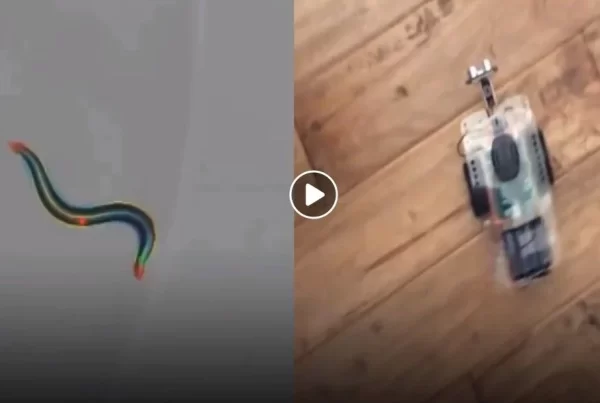
UNSW Sydney-led research paves the way for large silicon-based quantum processors for real-world manufacturing and application.
Australian researchers have proven that near error-free quantum computing is possible, paving the way to build silicon-based quantum devices compatible with current semiconductor manufacturing technology.
“Today’s publication in Nature shows our operations were 99 percent error-free,” says Professor Andrea Morello of UNSW, who led the work.
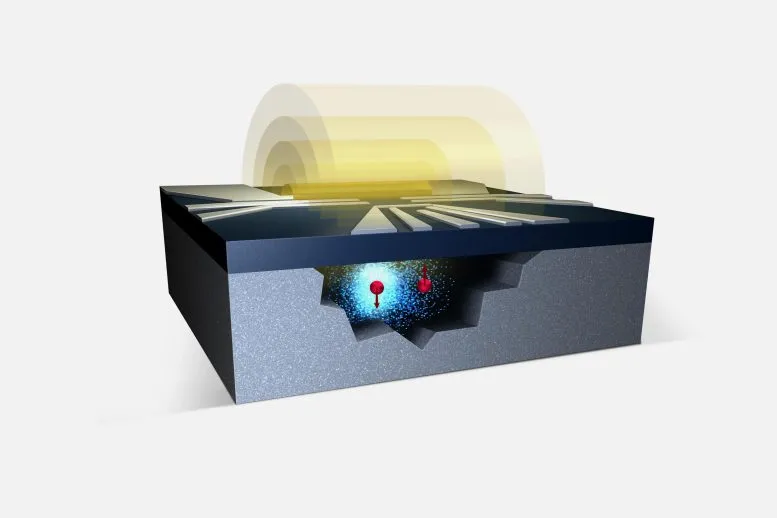
“When the errors are so rare, it becomes possible to detect them and correct them when they occur. This shows that it is possible to build quantum computers that have enough scale, and enough power, to handle meaningful computation.”
This piece of research is an important milestone on the journey that will get us there,” Prof. Morello says.
Quantum computing in silicon hits the 99% threshold
Morello’s paper is one of three published today in Nature that independently confirm that robust, reliable quantum computing in silicon is now a reality. This breakthrough features on the front cover of the journal.
- Morello et al achieved 1-qubit operation fidelities up to 99.95 percent, and 2-qubit fidelity of 99.37 percent with a three-qubit system comprising an electron and two phosphorous atoms, introduced in silicon via ion implantation.
- A Delft team in the Netherlands led by Lieven Vandersypen achieved 99.87 percent 1-qubit and 99.65 percent 2-qubit fidelities using electron spins in quantum dots formed in a stack of silicon and silicon-germanium alloy (Si/SiGe).
- A RIKEN team in Japan led by Seigo Tarucha similarly achieved 99.84 percent 1-qubit and 99.51 percent 2-qubit fidelities in a two-electron system using Si/SiGe quantum dots.

The UNSW and Delft teams certified the performance of their quantum processors using a sophisticated method called gate set tomography, developed at Sandia National Laboratories in the U.S. and made openly available to the research community.
Morello had previously demonstrated that he could preserve quantum information in silicon for 35 seconds, due to the extreme isolation of nuclear spins from their environment.
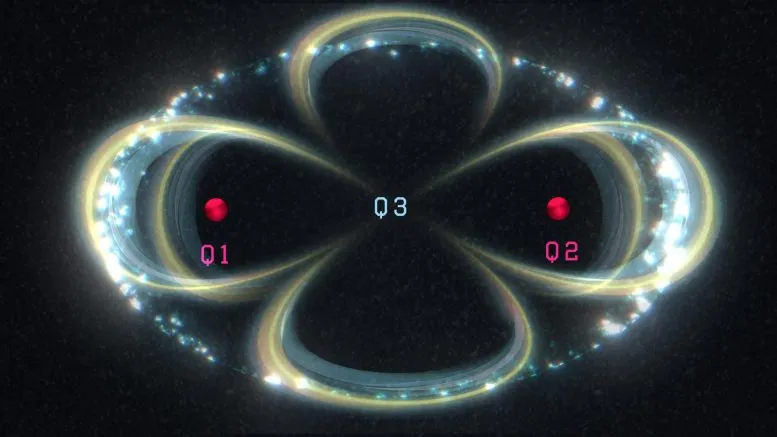
“In the quantum world, 35 seconds is an eternity,” says Prof. Morello. “To give a comparison, in the famous Google and IBM superconducting quantum computers the lifetime is about a hundred microseconds – nearly a million times shorter.”
But the trade-off was that isolating the qubits made it seemingly impossible for them to interact with each other, as necessary to perform actual computations.
Nuclear spins learn to interact accurately
Today’s paper describes how his team overcame this problem by using an electron encompassing two nuclei of phosphorus atoms.
“If you have two nuclei that are connected to the same electron, you can make them do a quantum operation,” says Dr. Mateusz Madzik, one of the lead experimental authors.
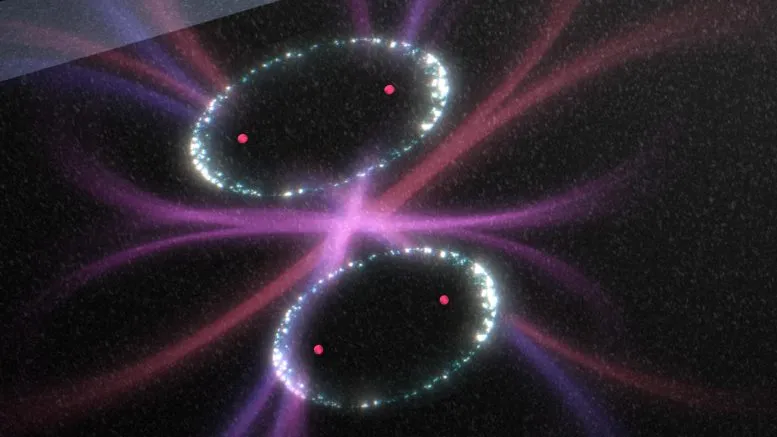
“While you don’t operate the electron, those nuclei safely store their quantum information. But now you have the option of making them talk to each other via the electron, to realize universal quantum operations that can be adapted to any computational problem.”
“This really is an unlocking technology,” says Dr. Serwan Asaad, another lead experimental author. “The nuclear spins are the core quantum processor. If you entangle them with the electron, then the electron can then be moved to another place and entangled with other qubit nuclei further afield, opening the way to making large arrays of qubits capable of robust and useful computations.”

David Jamieson, research leader at the University of Melbourne, adds: “The phosphorous atoms were introduced in the silicon chip using ion implantation, the same method used in all existing silicon computer chips. This ensures that our quantum breakthrough is compatible with the broader semiconductor industry.”
All existing computers deploy some form of error correction and data redundancy, but the laws of quantum physics pose severe restrictions on how the correction takes place in quantum computer. Prof. Morello explains: “You typically need error rates below 1 percent, to apply quantum error correction protocols. Having now achieved this goal, we can start designing silicon quantum processors that scale up and operate reliably for useful calculations.”
About the three papers
Semiconductor spin qubits in silicon are well-placed to become the platform of choice for reliable quantum computers. They are stable enough to hold quantum information for long periods and can be scaled up using techniques familiar from existing advanced semiconductor manufacturing technology.
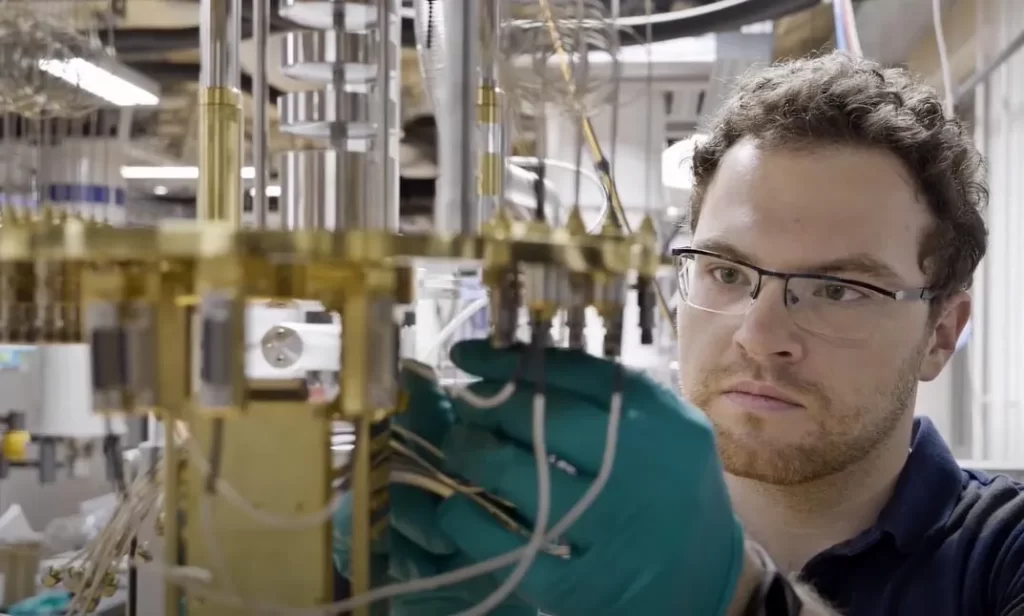
“Until now, however, the challenge has been performing quantum logic operations with sufficiently high accuracy,” Prof. Morello says.
“Each of the three papers published today shows how this challenge can be overcome to such a degree that errors can be corrected faster than they appear.”
- The UNSW team led by Andrea Morello created two-qubit universal quantum logic operations between two nuclear spins formed by phosphorous donors, introduced in silicon via the industry-standard method of ion implantation. The quantum operations involved an electron, whose probability wave is spread across both nuclei. The individual nuclei operated with fidelities up to 99.95%, and two-qubit operations with 99.37% fidelity, as certified by gate set tomography (GST). The electron spin is itself a qubit, which can be entangled with the two nuclei to create a three-qubit quantum entangled state, with fidelity of 92.5%.
Paper: https://www.nature.com/articles/s41586-021-04292-7; DOI: https://doi.org/10.1038/s41586-021-04292-7 - The Delft team led by Lieven Vandersypen created a two-qubit system in a material made from a carefully grown stack of silicon and silicon-germanium alloy (Si/SiGe). The quantum information is encoded in the spins of electrons confined in quantum dots. They applied gate set tomography not only to quantify, but also to improve the accuracy of the quantum operations and reached 99.5 percent fidelity on the two-qubit logic gate. “Pushing the two-qubit gate fidelity well beyond 99 percent required improved materials and specially designed qubit control and calibration methods,” Xiao Xue, lead author of the publication in Nature, said.
Paper: https://doi.org/10.1038/s41586-021-04273-w - The RIKEN group in Tokyo, led by Seigo Tarucha, one of the founders of the field of quantum dots, took a similar path, creating two electron quantum bits in Si/SiGe using the same material stack produced by the Delft group. They achieved single-qubit fidelities of 99.8% and two-qubit fidelity of 99.5 percent with very fast electrical operations. They measured the fidelity using randomized benchmarking.
Paper: https://www.nature.com/articles/s41586-021-04182-y; DOI: https://doi.org/10.1038/s41586-021-04182-y



